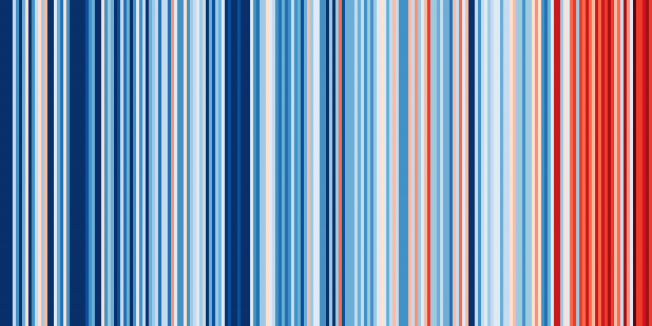Impact of Eurasian autumn snow on the winter North Atlantic Oscillation in seasonal forecasts of the 20th century
Weather and Climate Dynamics European Geosciences Union 2:4 (2021) 1245-1261
Abstract:
As the leading climate mode of wintertime climate variability over Europe, the North Atlantic Oscillation (NAO) has been extensively studied over the last decades. Recently, studies highlighted the state of the Eurasian cryosphere as a possible predictor for the wintertime NAO. However, missing correlation between snow cover and wintertime NAO in climate model experiments and strong non-stationarity of this link in reanalysis data are questioning the causality of this relationship. Here we use the large ensemble of Atmospheric Seasonal Forecasts of the 20th Century (ASF-20C) with the European Centre for Medium-Range Weather Forecasts model, focusing on the winter season. Besides the main 110-year ensemble of 51 members, we investigate a second, perturbed ensemble of 21 members where initial (November) land conditions over the Northern Hemisphere are swapped from neighboring years. The Eurasian snow–NAO linkage is examined in terms of a longitudinal snow depth dipole across Eurasia. Subsampling the perturbed forecast ensemble and contrasting members with high and low initial snow dipole conditions, we found that their composite difference indicates more negative NAO states in the following winter (DJF) after positive west-to-east snow depth gradients at the beginning of November. Surface and atmospheric forecast anomalies through the troposphere and stratosphere associated with the anomalous positive snow dipole consist of colder early winter surface temperatures over eastern Eurasia, an enhanced Ural ridge and increased vertical energy fluxes into the stratosphere, with a subsequent negative NAO-like signature in the troposphere. We thus confirm the existence of a causal connection between autumn snow patterns and subsequent winter circulation in the ASF-20C forecasting system.SST-driven variability of the East Asian summer jet on a decadal time-scale in CMIP6 models
Quarterly Journal of the Royal Meteorological Society Wiley 148:743 (2021) 581-598
Abstract:
The East Asian summer jet (EASJ) is an important component of the East Asian summer monsoon system and its variability is correlated with precipitation and surface temperature variations over this region. Whilst many studies have considered the interannual variability of the EASJ, less is known about variations on a decadal time-scale. This study investigates the relationship between decadal EASJ variability and sea surface temperatures (SSTs) and thus the potential predictability that SSTs may provide. Given the relatively short observational record, we make use of the long pre-industrial control simulations in the Coupled Model Intercomparison Project phase 6 (CMIP6) in addition to a large ensemble of atmosphere-only experiments, forced with random SST patterns. We then create an SST-based reconstruction of the dominant modes of EASJ variability in the CMIP6 models, finding a median EASJ–reconstruction correlation for the dominant mode of 0.43. Much of the skill in the reconstruction arises from variations in Pacific SSTs, however the tropical Atlantic also makes a significant contribution. These findings suggest the potential for multi-year predictions of the EASJ, provided that skilful SST forecasts are available.Seasonal prediction of tropical cyclones over the North Atlantic and Western North Pacific
Journal of Climate American Meteorological Society 35:5 (2021) 1385-1397
Abstract:
In this study, Tropical Cyclones (TC) over the Western North Pacific (WNP) and North Atlantic (NA) basins are analysed in seasonal forecasting models from five European modelling centres. Most models are able to capture the observed seasonal cycle of TC frequencies over both basins; however, large differences for numbers and spatial track densities are found. In agreement with previous studies, TC numbers are often underestimated, which is likely related to coarse model resolutions. Besides shortcomings in TC characteristics, significant positive skill (deterministic and probabilistic) in predicting TC numbers and accumulated cyclone energy is found over both basins. Whereas the predictions of TC numbers over the WNP basin are mostly unreliable, most seasonal forecast provide reliable predictions for the NA basin. Besides positive skill over the entire NA basin, all seasonal forecasting models are skillful in predicting the interannual TC variability over a region covering the Caribbean and North American coastline, suggesting that the models carry useful information, e.g. for adaptation and mitigation purposes ahead of the upcoming TC season. However, skill in all forecast models over a smaller region centred along the Asian coastline is smaller compared to their skill in the entire WNP basin.Detection of interannual ensemble forecast signals over the North Atlantic and Europe using atmospheric circulation regimes
Quarterly Journal of the Royal Meteorological Society Wiley 148:742 (2021) 434-453
Abstract:
To study the forced variability of atmospheric circulation regimes, the use of model ensembles is often necessary for identifying statistically significant signals as the observed data constitute a small sample and are thus strongly affected by the noise associated with sampling uncertainty. However, the regime representation is itself affected by noise within the atmosphere, which can make it difficult to detect robust signals. To this end we employ a regularised k-means clustering algorithm to better identify the signal in a model ensemble. The approach allows for the identification of six regimes for the wintertime Euro-Atlantic sector and leads to more pronounced regime dynamics, compared to results without regularisation, both overall and on sub-seasonal and interannual timescales. We find that sub-seasonal variability in the regime occurrence rates is mainly explained by changes in the seasonal cycle of the mean climatology. On interannual timescales relations between the occurrence rates of the regimes and the El Ni˜no Southern Oscillation (ENSO) are identified. The use of six regimes captures a more detailed response of the circulation to ENSO compared to the common use of four regimes. Predictable signals in occurrence rate on interannual timescales are found for the two zonal flow regimes, namely a regime consisting of a negative geopotential height anomaly over the Norwegian Sea and Scandinavia, and the positive phase of the NAO. The signal strength for these regimes is comparable between observations and model, in contrast to that of the NAO-index where the signal strength in the observations is underestimated by a factor of two in the model. Our regime analysis suggests that this signal-to-noise problem for the NAO-index is primarily related to those atmospheric flow patterns associated with the negative NAO-index as we find poor predictability for the corresponding NAO− regime.Forecast-based attribution of a winter heatwave within the limit of predictability
Proceedings of the National Academy of Sciences National Academy of Sciences 118:49 (2021) e2112087118



